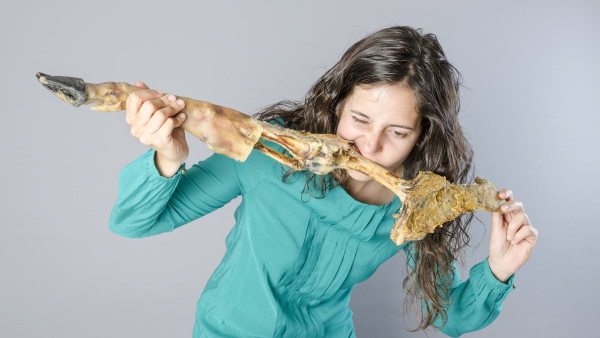As the saying goes: "From pigs it takes advantage till the way he walks". Well, from the Ham leg, till the bone.
From Serrano ham or pork shoulder Ham, not only the mace and the stifle are usable, from which you get the easiest slices, but the whole piece has performance for various and different elaborations.
Many people, especially from other countries, who are not familiar with Spanish hams, tend to think that the usable percentage of a piece is very little and therefore it is expensive. Most of them approach our product when buying a cured pork shoulder, since they are cheaper than hams, without knowing that the front legs, unlike the rear ones, have much more fat, and are often disappointed at times.
Next I am going to tell you about the percentages of meat and fat in the different pieces and how to take advantage of an Iberico ham from end to end.
What is the yield of the Serrano ham and shoulder?
In all hams and shoulders we find different parts:
- The crust.
- The fat.
- The meat.
- The bones.
The yield is the percentage of the meat that we remove according to the weight of the whole ham or shoulder. The figures are different if we talk about Serrano ham, shoulder or Iberian ham. For example, in Iberian products there is a higher percentage of external fat, and within these, an Iberico ham from Cebo de Campo does not have the same amount as a 100% jamon Iberico; That is why the% will always be different, even if the weight is the same as a ham obtained from white pigs.
How can I calculate the usable part of the ham or shoulder?
To do this, the entire piece must be weighed. You write down the weight on a piece of paper. You are saving all the rind and fat that you have been removing and at the end, when you think you can not get anything else, you weigh the bones together with what you have discarded while you were consuming it. Now it is just doing a simple equation.
Let's suppose that a whole piece of Spanish ham weighs 8 kilos before starting it. And that after doing the previous process, we have 4.5 kg of bone, fat and bark left. We just have to apply this rule:
8kg ------- 100%
4.5kg ----- X
If 8 kg is 100% of the weight, what is 4.5 kg?
I multiply 4.5 x 100 and divide the result by 8. Thus we obtain the percentage of the unusable part of the piece. 4.5x8 = 450/8 = 56.25%
The difference, (46.75%) to 100% is the yield.

What is the yield of the Serrano ham, the shoulder and the Iberian ham?
We cannot speak of exact numbers since it varies according to some circumstances, but we can give approximate figures.
• Serrano Ham: It has an approximate yield of 50%. A piece that weighs 8 kg will have 4 kg of meat and 4 kg of rind, fat and bones.
• Serrana Shoulder: An approximate yield of 40%. A Serrano shoulder that weighs 5 kg will have 2 kg of meat and 3 kg of rind, fat and bones.
• Iberian Ham: An approximate yield of 45%. If we buy a 7 kg Iberian ham, it will have 3.15 kg of meat and 3.85 kg of rind, fat and bones.
This broadly speaking, since a 100% jamon iberico Pata Negra ham is not the same as 50% Iberian. It is not even the same if it is acorn and has been raised in freedom and running freely through the meadows, than if it has not been.
• Iberian pork Shoulder: They have the lowest yield of all the pieces, especially the 100% Iberian pata negra, even having only 30% of the total weight. This would give a yield of 1.2 kg from a 4 kg piece. Thanks to this fat, the characteristic flavour, aroma and texture so desired are achieved.
If you want to know more about the difference between Serrano hams and Iberian hams, you can read this article.
But the reality is not as stark as it is painted. I already told you at the beginning that the pig, even the gait. Well, with all those "leftovers" you can do real wonders.
What to do with the "waste".
Some call bark, fat and bones waste. Worst of all is that they throw it in the garbage can. Big mistake! With the crust, you can put it in a saucepan over low heat until it melts, and use that broth to add more flavor to other foods. You can keep it in the fridge and put a spoonful in other sauces to make them more tasty.
With the fat, like the crust, it can be used to sauté any vegetable or with a sauce. You will notice the difference. And what about the chicharrones? In the next article I will give you the step-by-step recipe to make tasty and crunchy Iberian pork rinds.
The bone can be cut into 3 pieces and stored in the fridge or freezer. It is ideal to enhance broths and consommés or the typical Madrid stew.
We hope you never throw away the bones, rind, or fat again.
We hope to see you on our facebook, in the store or on the Blog where you can read everything about Serrano ham, share recipes, participate in raffles or buy the best Iberico ham.
Happy New Year 2021!
